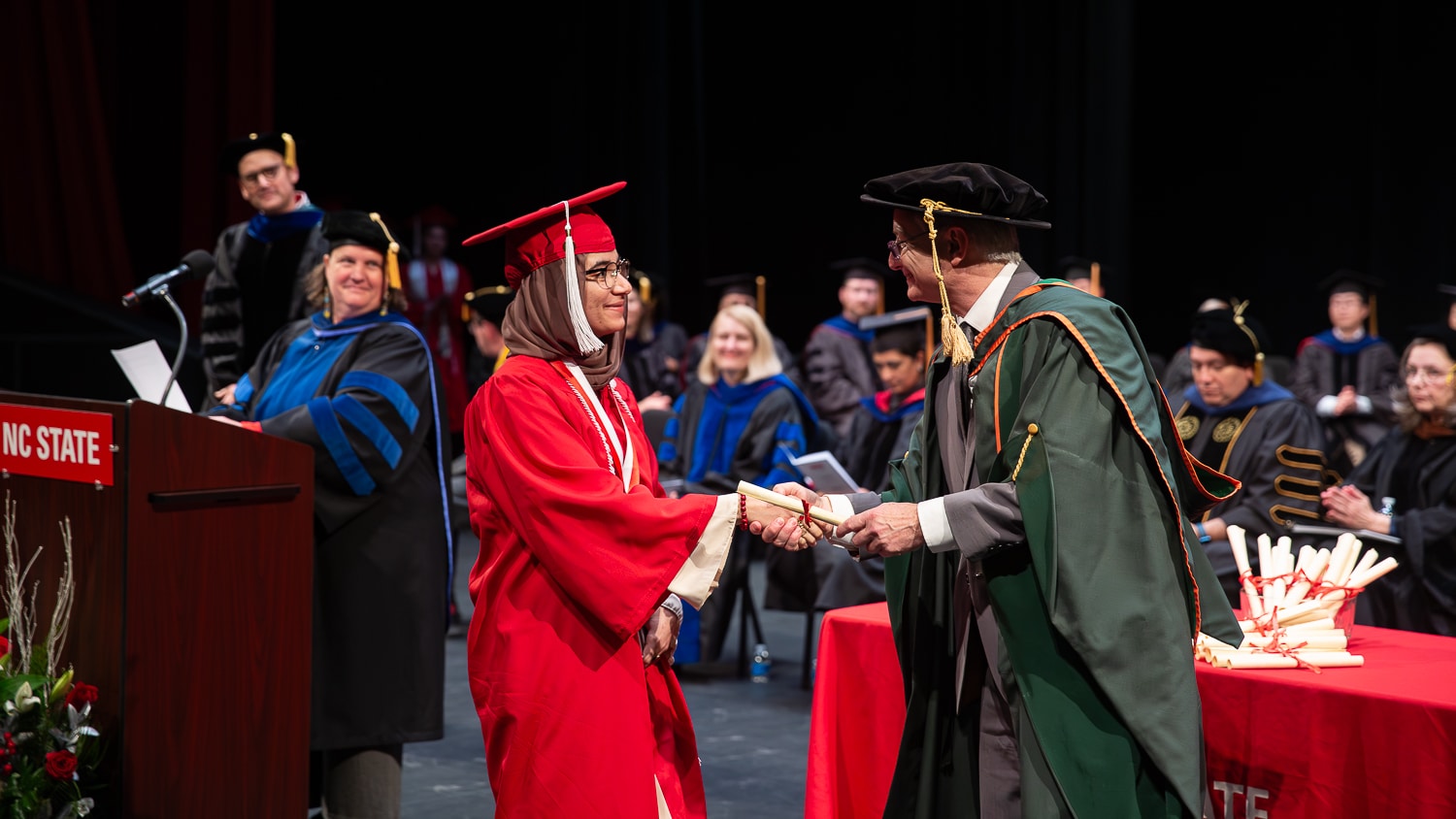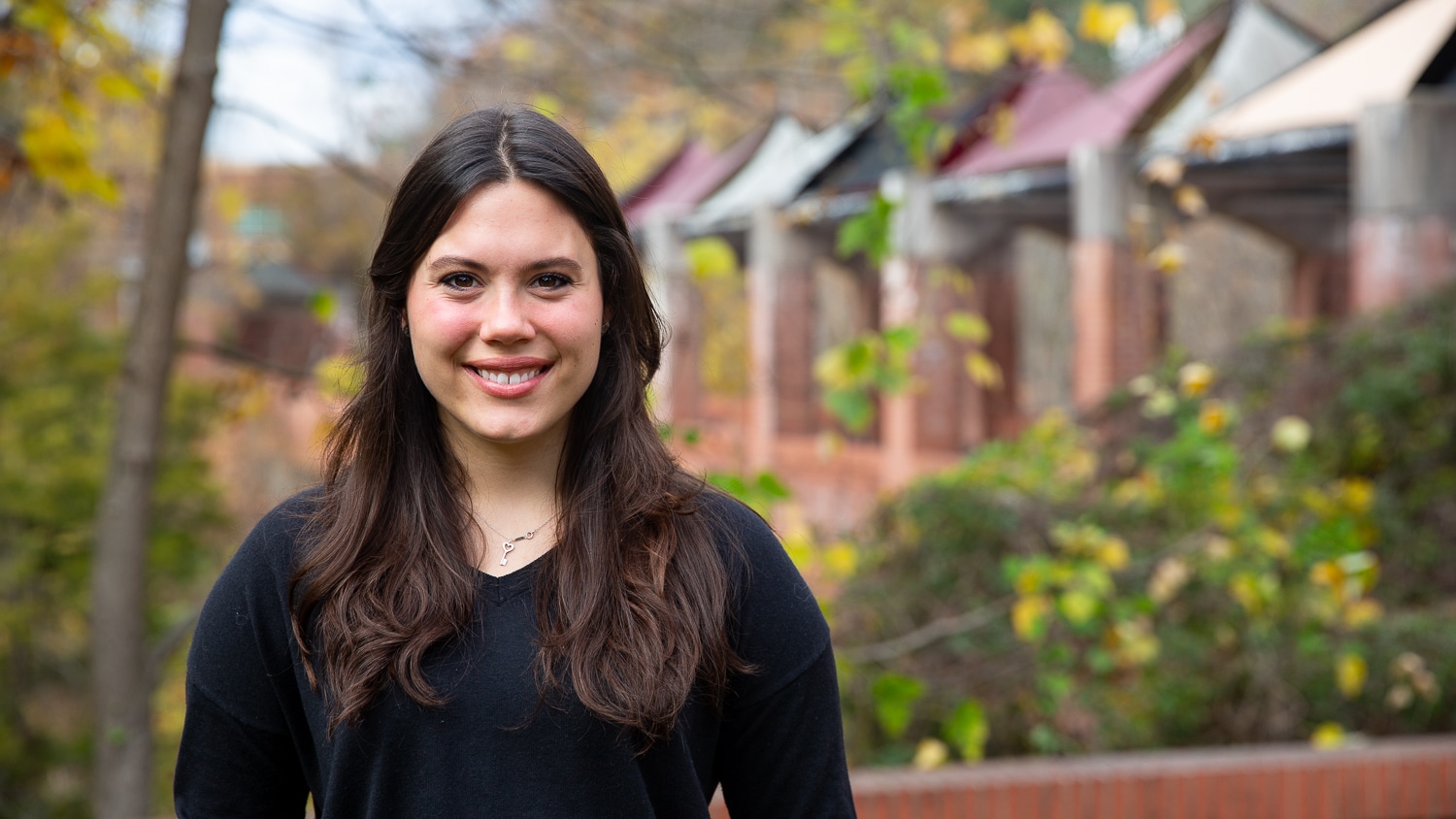Problem-Solving for Prototyping

By Jessica Roulhac
Associate Professor of Textile and Apparel, Technology and Management (TATM) Anne Porterfield is an expert at showcasing her attention to details — behind the scenes and front-and-center.
Today, she is an expert in 3-D apparel design software. The software could help design teams optimize the prototyping process by ruling out what works — and what doesn’t — sooner.
To determine if the software could be a good fit for a company, the process starts with a conversation. Porterfield and her students learn about pain points, from anxiety about learning something new to finding time to train employees. Porterfield hopes to support industry decision-makers by demonstrating how the software can best serve their needs.
“That’s really where we come in as researchers,” she says. “By kind of informing how software training might be done or just thinking about what considerations need to be brought into the picture.”
Before Porterfield was teaching students how to use this innovative software at NC State, she was thriving in the theater world. After receiving an undergraduate degree in anthropology from George Washington University, Porterfield flipped the script on her career pursuit. She followed in her family’s theatrical footsteps and pursued a master’s degree in fine arts. She specialized in costume design at the University of Texas at Austin.
When she met a skilled group of professional artists during post-graduate work, she began writing the next chapter of her career.
“I had the opportunity to work with some wig makers,” Porterfield says. “I quickly discovered that wig making really combined my interest in details and three-dimensional design.”
The experience set the stage for a successful and exciting career, including a position at the nationally recognized Alley Theatre in Houston. Here, Porterfield created unique looks for the resident actors.
“That was something that I loved,” Porterfield says. “I loved the interpretation and collaboration of that, as well as just the artisanship.”
Porterfield excelled as a wig maker and found work she truly enjoyed. Then, a national tragedy changed her perspective. When September 11 shook the nation and the world, Porterfield wanted nothing more than to be closer to family.
Without knowing the next act of her career, Porterfield packed up and returned to Raleigh.
Building a partnership through ballet
As Porterfield began her job search, she learned of an opening at the Carolina Ballet. She applied for the position and would become the company’s costume director for five years. On the board of directors at the time was the dean of the then-College of Textiles, Blan Godfrey. He helped to connect Porterfield with students in the college, who eventually supported digital printing for the ballet.
“There was a show I was designing costumes for where I was able to sort of design some motifs, and students at the college made that into a digital print,” Porterfield recalls. “We had sort of custom-printed fabric for costumes, and that was my introduction to digital print technology.”
Porterfield was curious about the digital print technology — and other computer-aided design (CAD) technology offered by the college.
She decided to pursue a master’s degree in textiles. After completing the program in 2013, Porterfield continued her research and education. In her doctoral research, she was hands-on with 3-D apparel visualization software, which allowed her to conduct “virtual fittings” with costume designers and makers. She earned her Ph.D. in textile technology management in 2015.
Although 3-D apparel design software isn’t new to the industry, Porterfield has since encountered two groups: companies that are either using the technology or considering ways to get started. By visualizing designs earlier with the 3-D software, teams can move more efficiently through the prototyping process.
“Some of that process involves saying, ‘Okay, maybe we’re using this software to confirm things that in the physical prototyping process we would have looked at several steps down,’” she says. “So sometimes it’s changing up the order of the process, which is really interesting.”
Porterfield is preparing her students to lead the conversation. She uses creative ways to add the software to the curriculum. Knowing this software on the first day of an internship adds a competitive edge.
Of course, she doesn’t do it alone. Porterfield collaborates with others in the college, including experts in textile technology, consumer behavior and other specialized fields. She recently partnered with Associate Professor Kavita Mathur and Jasmine Jackson, a graduate student in the college. With funding from the NC State Office of Outreach and Engagement, they created the college’s first fashion program for middle school students.
“One of the things that is really exciting I think about this college is that I don’t have to have the whole solution myself. I can sort of bring my expertise,” she says. “A lot of the research my students are doing is fueled by that collaboration.”
- Categories:


